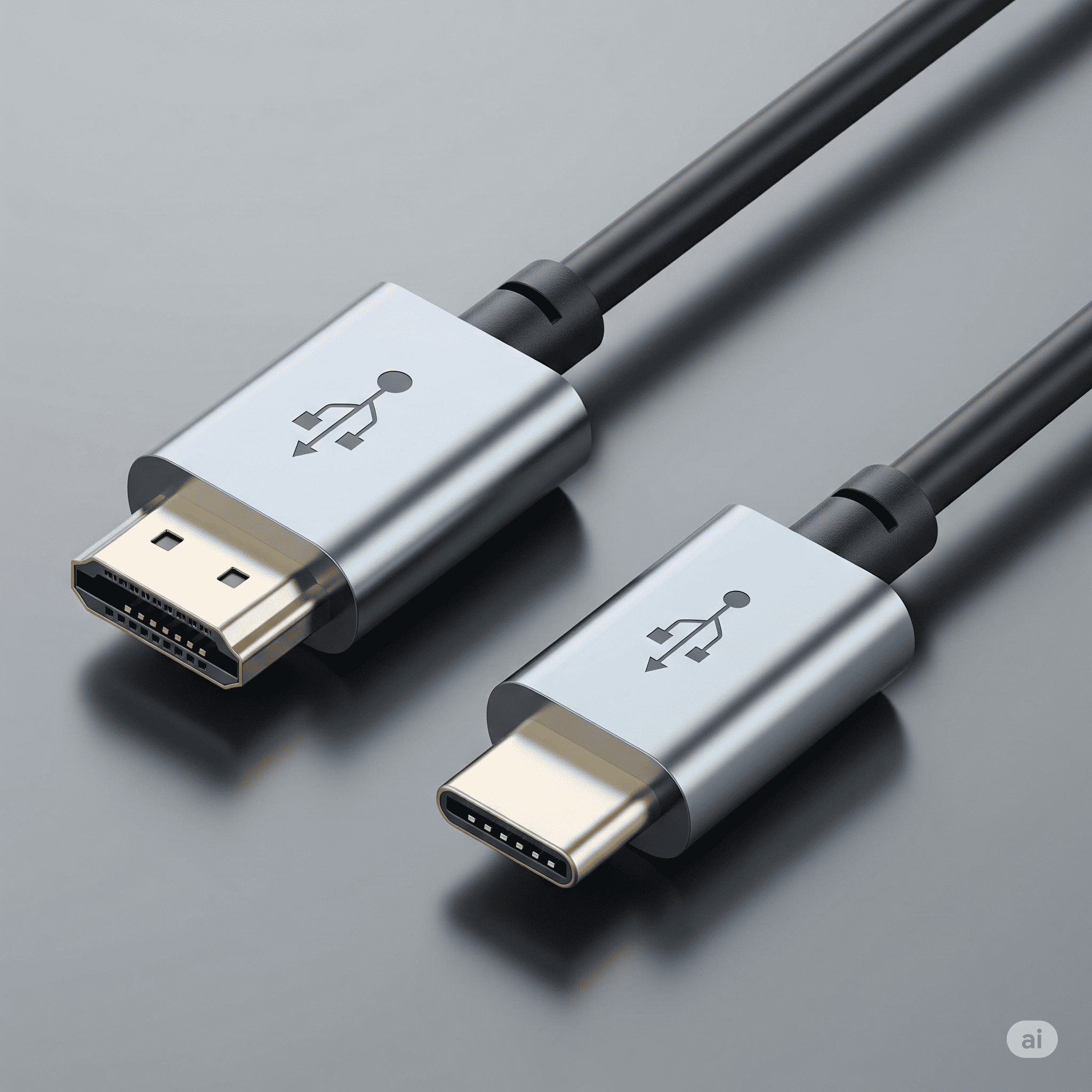Kingsgrove Branch:
HDMI to USB-C

HDMI to USB-C, a versatile connectivity solution, is rapidly becoming a go-to for connecting various devices. From gaming consoles and TVs to laptops and mobile devices, this adapter offers a convenient and often necessary bridge between disparate technologies. This guide dives deep into the nuances of HDMI to USB-C, exploring its features, applications, technical specifications, troubleshooting, and even future trends
Get ready to unravel the secrets behind this adaptable connector!
This comprehensive exploration covers everything from understanding the different types of HDMI to USB-C adapters to troubleshooting common connection issues. We'll examine the technical specifications, comparing them to other connectivity options, and discussing potential compatibility problems. We'll also delve into the factors influencing performance and reliability, providing insights into future developments in this rapidly evolving field
Exploring the Versatility of HDMI to USB-C Adapters: Hdmi To Usb C
HDMI to USB-C adapters are becoming increasingly popular for connecting various devices. They offer a convenient way to bridge the gap between devices with different ports, especially in situations where a direct connection isn't possible. This versatility is driven by the growing number of USB-C ports on newer laptops, tablets, and even some TVs, creating a need for adapters to support older HDMI-equipped devices
Different Types of HDMI to USB-C Adapters, Hdmi to usb c
HDMI to USB-C adapters come in various forms, each tailored for specific needs. Some focus on simple video output, while others offer audio support as well. Key features to consider include resolution support, data transfer rate, and the presence of audio channels. Different models cater to diverse needs, from basic video mirroring to high-resolution gaming setups
- Basic Video Output: These adapters prioritize simple video mirroring, ideal for basic presentations or connecting a laptop to a larger display
- Audio-Enabled Adapters: These models support both video and audio transmission, allowing you to stream sound along with the video signal, perfect for a more immersive home theater experience
- High-Resolution Adapters: Designed for high-resolution displays, these adapters ensure optimal image quality for demanding tasks like gaming or professional video editing
Applications and Use Cases
These adapters find numerous applications across diverse scenarios. From connecting gaming consoles to televisions for enhanced entertainment experiences to using them in professional presentations, they offer a flexible solution
- Home Theater Setups: Connecting gaming consoles or Blu-ray players to TVs using a USB-C port on the TV, allowing for a seamless integration of different devices
- Mobile Device Connectivity: Connecting a laptop to a projector or a large screen for presentations or presentations, providing a convenient alternative to traditional VGA or HDMI connections
- Professional Presentations: Facilitating seamless presentations by connecting laptops to large screens or projectors, allowing for a more professional and impactful display of information
Advantages and Disadvantages Compared to Other Options
HDMI to USB-C adapters offer a compelling alternative to traditional connectivity options. However, understanding their strengths and limitations is essential for informed decisions
- Advantages: Reduced cable clutter, streamlined setup, compatibility with a growing number of devices, and portability
- Disadvantages: Potential compatibility issues, slower data transfer rates in some instances, and the need for a dedicated adapter for each device combination
Technical Specifications and Compatibility Considerations
Understanding the technical specifications of both HDMI and USB-C is crucial for optimal performance and compatibility. Variations in versions of both protocols can impact functionality
- HDMI Specifications: HDMI supports a wide range of resolutions and frame rates, ensuring high-quality video output. Different versions of HDMI have varying capabilities
- USB-C Specifications: USB-C's versatility extends beyond data transfer, encompassing video output as well. Different USB-C versions support different bandwidths and resolutions
- Compatibility Issues: Potential compatibility issues arise due to differing versions of HDMI and USB-C, impacting resolution, frame rate, and overall performance
Troubleshooting Common Problems
A well-structured troubleshooting guide is crucial for resolving connection issues. This table Artikels common problems and potential solutions
| Troubleshooting Steps |
|---|
| Verify cable connections, adjust display settings, and check for driver updates |
| Check audio settings on both devices, verify the adapter supports audio, and ensure correct cable connections |
| Ensure both devices support the adapter, try a different cable, and verify correct port selection |
Performance and Reliability Analysis
Performance depends on various factors, including data transfer rates and signal quality. Consider these factors when selecting an adapter
- Data Transfer Rates: Different adapters support different data transfer rates, impacting video quality and performance
- Signal Quality: Factors like cable quality and environmental conditions can affect signal strength and stability
- User Reviews: Gathering user reviews can provide valuable insights into the reliability of different adapters
Future Trends and Developments
The future of HDMI to USB-C technology holds exciting possibilities. Emerging trends and advancements suggest a dynamic evolution
- Higher Data Transfer Rates: Future versions of HDMI and USB-C could enable faster data transfer rates, improving performance and video quality
- Enhanced Signal Quality: Improvements in signal transmission could result in more stable and reliable connections, even in challenging environments
- Integration of New Functionalities: Future adapters may integrate support for higher resolutions, 3D visuals, or enhanced audio capabilities
Article Structure and Content Requirements
This structure Artikels a comprehensive approach to the article. Logical sections and sub-sections ensure clarity
- Introduction: Provides a broad overview of HDMI to USB-C adapters
- Technical Specifications: Details the specifications and potential compatibility issues
- Applications: Illustrates the varied use cases in different settings
- Troubleshooting: Offers a systematic approach to common problems
- Performance Analysis: Evaluates the performance and reliability of different adapters
- Future Trends: Explores potential advancements in HDMI to USB-C technology
Final Conclusion
In conclusion, HDMI to USB-C adapters have revolutionized the way we connect devices, offering a flexible and often superior alternative to traditional methods. This guide has explored the myriad aspects of these adapters, from their diverse applications to potential future developments. We've equipped you with the knowledge and tools to navigate the world of HDMI to USB-C connections with confidence, see more USB B
Now go forth and connect your devices seamlessly
Answers to Common Questions
What are the common problems with HDMI to USB-C connections?
Common issues include image distortion, audio problems, and connection failures. Troubleshooting steps often involve checking cable integrity, verifying device compatibility, and adjusting settings
What resolutions and frame rates do HDMI to USB-C adapters support?
Support varies significantly by adapter. Refer to the adapter's specifications for details on compatible resolutions and frame rates. Higher-end adapters often support higher resolutions and frame rates
Are there any compatibility issues with HDMI to USB-C adapters?
Yes, compatibility issues can arise due to differing hardware specifications. Ensure both the adapter and the devices are compatible. Check device specifications for compatibility before purchase
How can I optimize the performance of my HDMI to USB-C connection?
Optimize performance by ensuring a direct and stable connection. Avoid using the connection in harsh environments or through excessive obstacles. Consider the quality of the adapter itself
Recent posts

Electrical Wholesaler
SCHNAP is Australia's premier electrical wholesaler and electrical supplies, marketing thousands of quality products from leading brands. Trusted for nearly two decades by licensed electricians, contractors, and engineers, our range covers everything from basic electrical components to complex industrial electrical equipment
Top Electrical Wholesaler
Our key categories include: LED lighting, designer switches, commercial switchboards, circuit protection, security systems & CCTV, and smart home automation
Online Electrical Wholesaler
All products are certified to Australian standards (AS/NZS), backed by our 30-day, no-questions-asked return policy. Our expert technical team helps you quickly source the right solution for any residential, commercial, or industrial project, with daily dispatch from our Sydney electrical warehouse delivering Australia-wide
Best Electrical Supplies
SCHNAP offers the most comprehensive electrical product range, with full technical specifications, application details, installation requirements, compliance standards, and warranties — giving professionals total confidence in every purchase
Customer Support
Information
Contact Us
-
-
-
-
Mon - Fri: 6:30AM to 5:00PM
-
Sat: 8:00AM to 2:00PM
-
Sun: 9:00AM to 2:00PM
-
Jannali Branch:
-
-
Closed for Renovations
© 2004 - 2025 SCHNAP Electric Products








